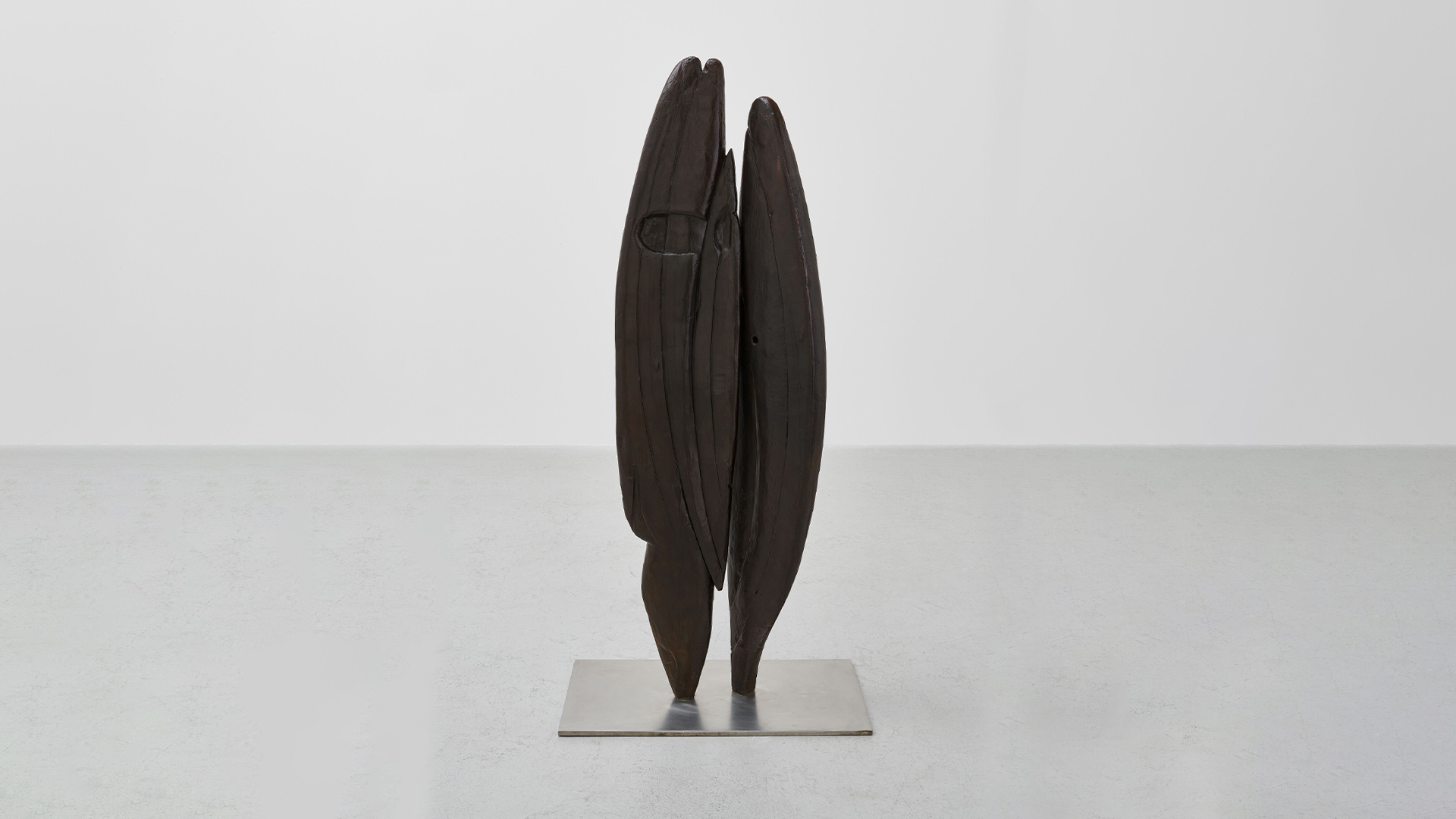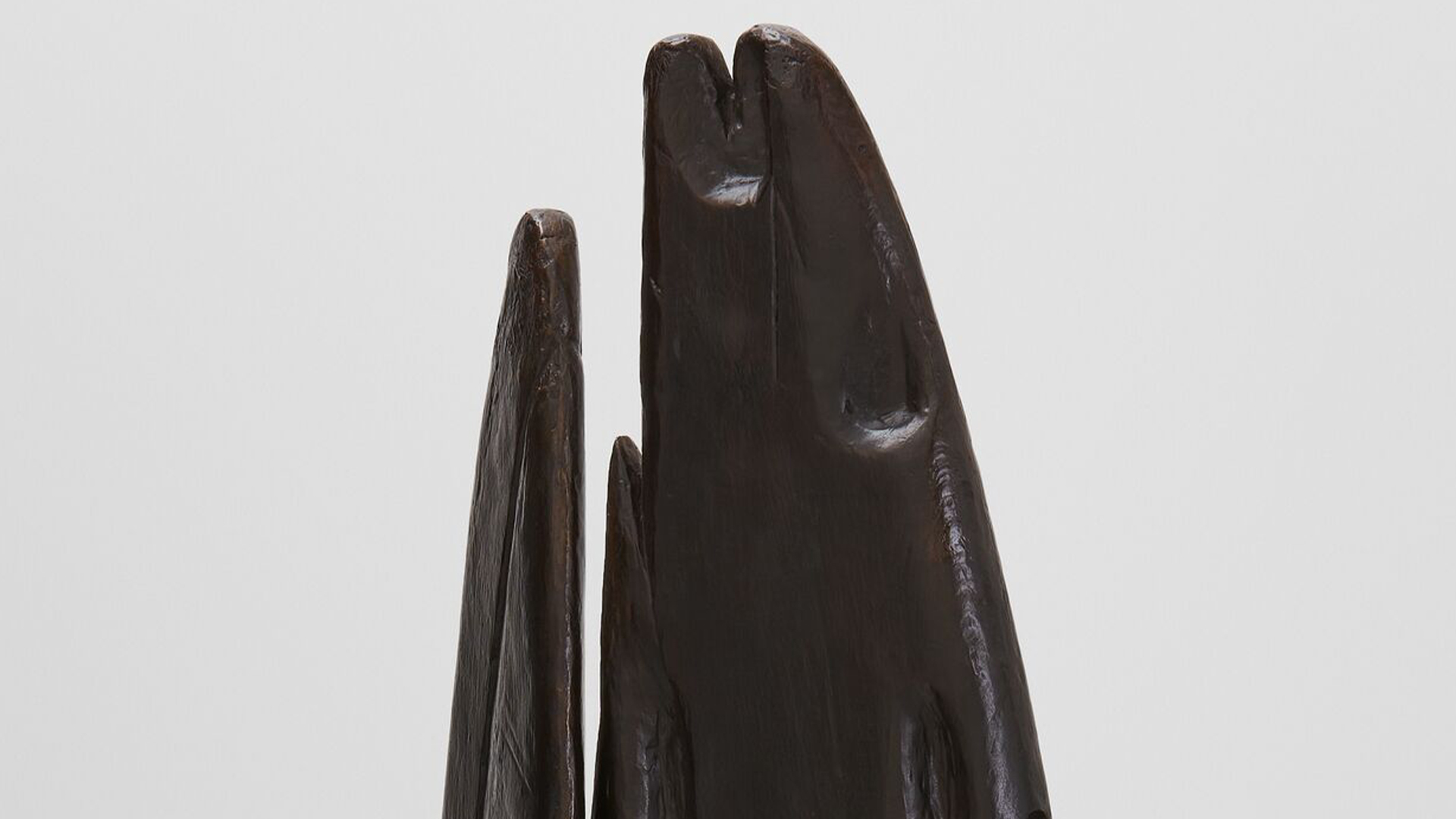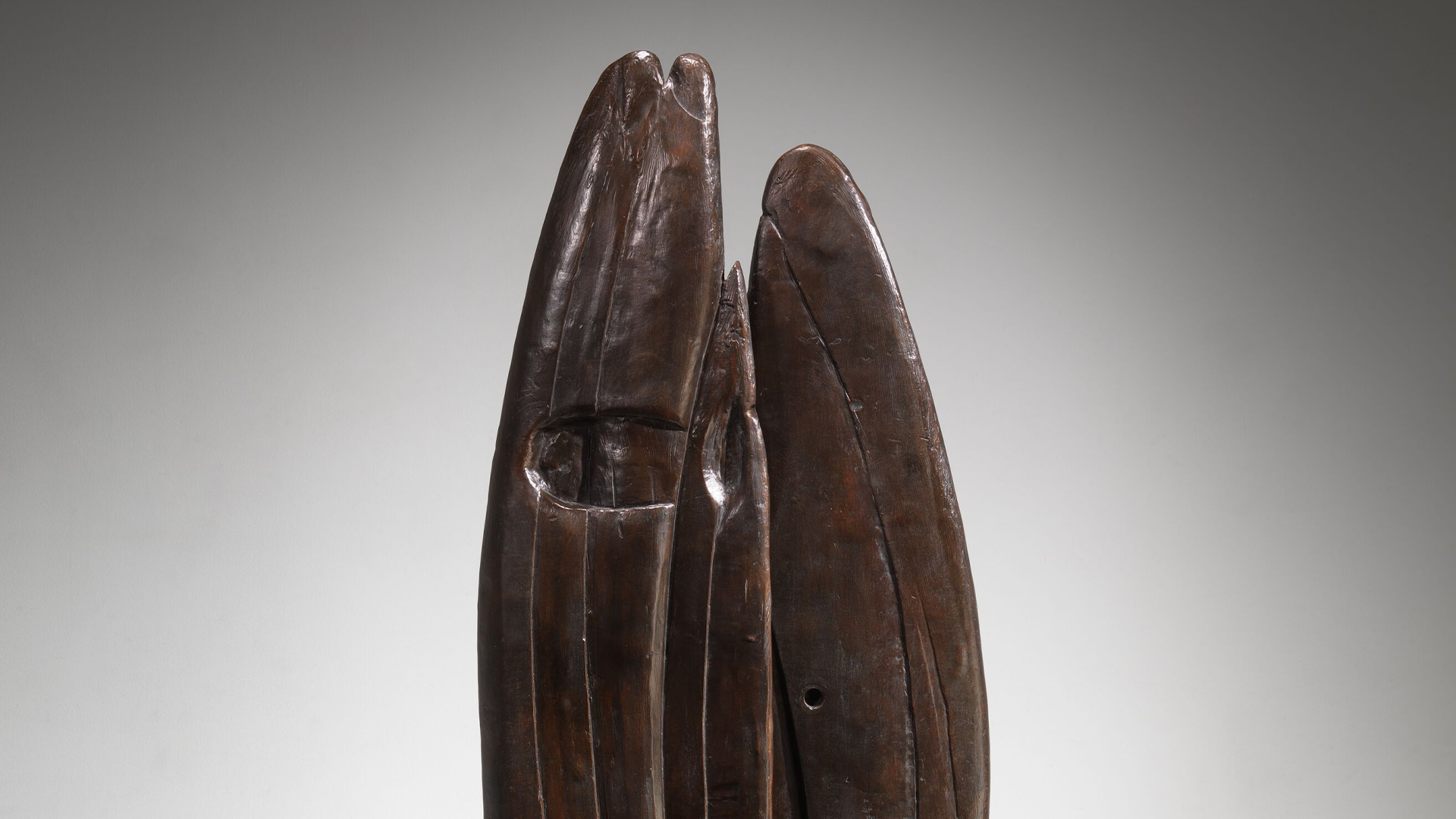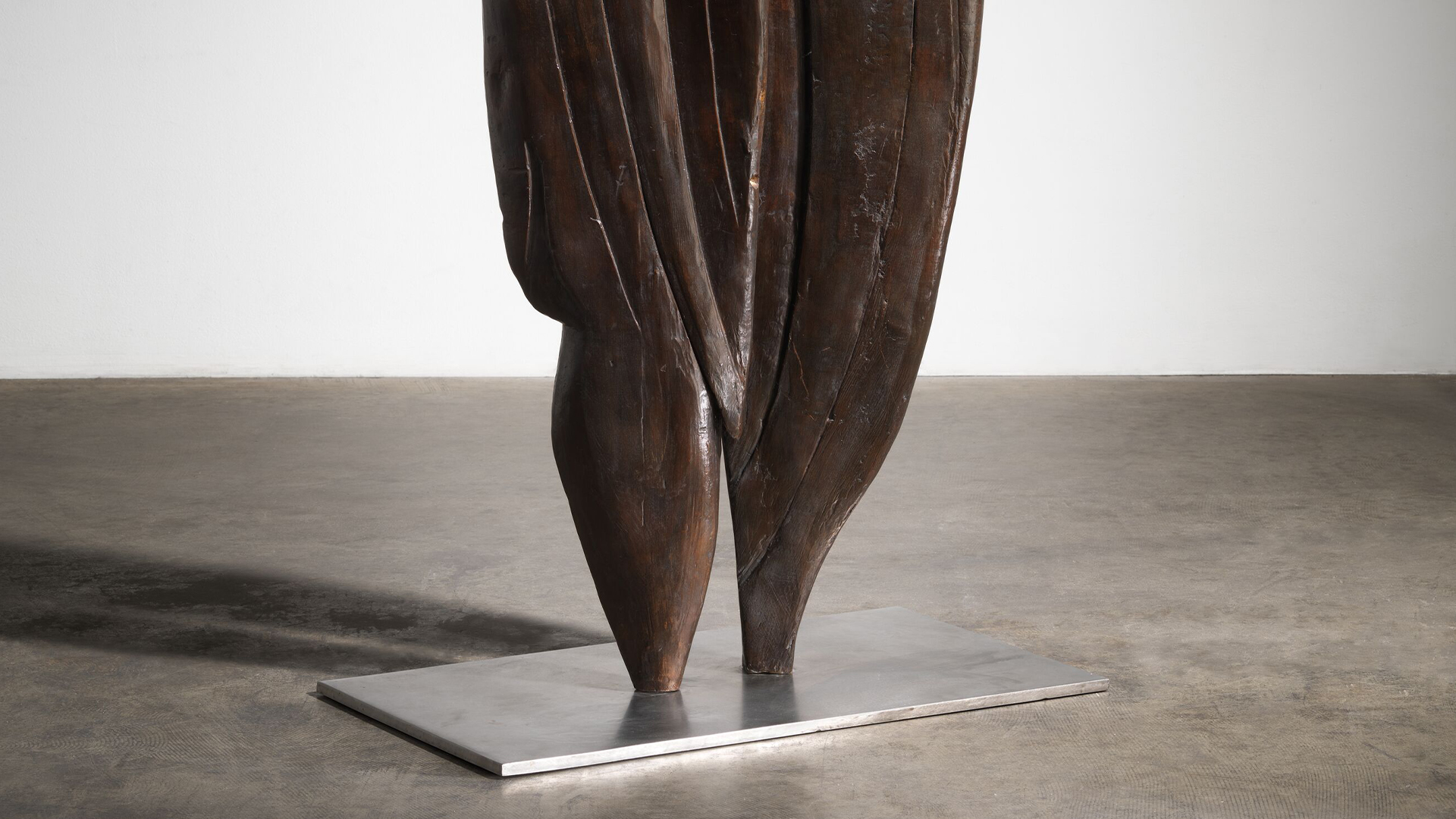Louise Bourgeois
Brother & Sister
Brother & Sister
Price available upon request
1949
Bronze and stainless steel
Ed. 6/6 + 1 AP
165.7 x 76.2 x 43.2 cm / 65 ¼ x 30 x 17 inches

‘Brother & Sister’ (1949) is an extraordinary example from one of Louise Bourgeois’ most renowned series, the Personages. Reminiscent of conjoined leaves, centrally fused and yet distinct, the totemic sculpture’s title alludes to the artist and her younger brother Pierre. Considered by Bourgeois to be her first mature sculptural works, the Personages express the artist’s sense of psychological loss and guilt in the wake of World War II, which began soon after she moved from Paris to New York.
Unable to return to France to visit friends and family, Bourgeois felt isolated and alone. As the artist described: ‘I was missing certain people that I had left behind. It was a tangible way of re-creating a missed past. The figures were presences […] It was the reconstruction of the past.’ [1] The Personages also mark Bourgeois’ departure from the paintings she made during her first years in New York. Describing her switch from painting to sculpture, Bourgeois insisted that she was not satisfied with the prior medium’s ‘level of reality.’ [2]


Eventually comprising around 80 works in total, Bourgeois debuted some of the Personages, including the original wood version of ‘Brother & Sister,’ in the groundbreaking exhibition ‘Louise Bourgeois, Recent Work 1947–1949: Seventeen Standing Figures in Wood’ at Peridot Gallery in New York. Bourgeois installed these abstract, monolithic sculptures directly into the gallery floor, as a way of echoing the social interactions of her audience. The art historian Mignon Nixon explains: ‘In effect, the Personages took over the room in advance of the gallery visitors and mimicked their prospective poses: leaning together, edging to the wall, listing on high heels, standing alone.’ [3] The installation, paired with the figures’ human proportions, bestows them with a unique sense of ‘personality’ and anthropomorphism.
Later, when she recalled her French colleagues’ responses to her new sculptures, Bourgeois recounted: ‘Pierre Matisse and Duchamp came by and said, ‘This is extraordinary!’ I told them it was simply a manifestation of ‘homesickness.’ They looked at each other and understood, that’s all there was to it.’ [4] Immediately met with critical acclaim from critics and fellow artists, Bourgeois’ Personages exemplify the artist’s unmatched ability to convey fundamental human emotions and experiences. An exceptional work from this seminal series, ‘Brother & Sister’ highlights how Bourgeois’s uncompromising examination of her emotions and memories led her to create some of the most pivotal sculptures of the previous century.

About the artist
 Born in France in 1911 and working in America from 1938 until her death in 2010, Louise Bourgeois’ work is inextricably entwined with her life and experiences. For over seven decades, Bourgeois’ creative process was fueled by an introspective reality, often rooted in cathartic re-visitations of early childhood trauma and frank examinations of female sexuality. Articulated using recurrent motifs (including body parts, houses and spiders) holding personal symbolism, the conceptual and stylistic complexity of Bourgeois’s oeuvre plays upon the powers of association, memory, fantasy and fear.
Born in France in 1911 and working in America from 1938 until her death in 2010, Louise Bourgeois’ work is inextricably entwined with her life and experiences. For over seven decades, Bourgeois’ creative process was fueled by an introspective reality, often rooted in cathartic re-visitations of early childhood trauma and frank examinations of female sexuality. Articulated using recurrent motifs (including body parts, houses and spiders) holding personal symbolism, the conceptual and stylistic complexity of Bourgeois’s oeuvre plays upon the powers of association, memory, fantasy and fear.

Artwork images © The Easton Foundation/VAGA at ARS, NY. Photo: Jon Etter, Christopher Burke
Portrait © The Easton Foundation/VAGA at ARS, NY. Photo: Mark Setteducati
1.) Louise Bourgeois quoted in Susi Bloch, ‘Interview with Louise Bourgeois,’ Art Journal 35, no. 4 (Summer 1976), p. 373.
2.) Mignon Nixon, ‘Fantastic Reality. Louise Bourgeois and a Story of Modern Art,’ Cambridge MA: MIT Press, 2005, p. 126.
3.) Ibid.
4.) Louise Bourgeois quoted in Alain Kirili, ‘The Passion for Sculpture: A Conversation with Louise Bourgeois,’ Arts 63, no. 7 (March 1989), p. 70.



